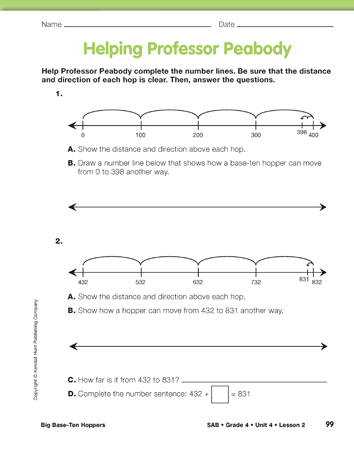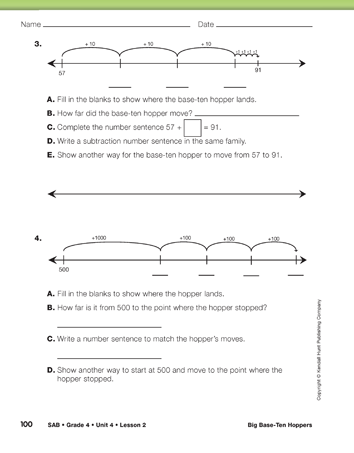Assign Questions 1–2 on the Helping Professor Peabody pages in the Student Activity Book. As students work on the questions, circulate and engage them in discussions about their work.
Ask them to explain their thinking using discussion prompts similar to the following for Question 2:
- How is the number line you drew for Question 2B in the Student Activity Book like the one before it on that page? (Possible response: They both start at 432 and end at 831. They both show the difference between 432 and 831 is 399.)
- How are the two number lines different? (The hopper goes by hundreds to 832 in the book first, then goes back one. On my line, I went to the next ten and the next hundred first. See my number line. Then I kept going to 832. (See second number line in Figure 1.)
- Which way is the most efficient or easiest to think about in your head? Why? (Possible response: I like my way best because it is easier to count by hundreds on the hundreds like 400, 500, 600 rather than having to go 432, 532, 632.)
- Did you move backward on any hops? Why or why not?
- How did you find how far it was from 432 to 831? (399) Can you use mental math to do that? (yes) Why or why not? (I know 832 − 432 is 400. Since 831 is one less than 832, I need to do 400 − 1 to get the answer 399.)
- Is there a subtraction sentence that matches these number lines? (831 − 432 = 399 or 831 − 399 = 432)
Have students complete Questions 3–6 in class or as homework.















